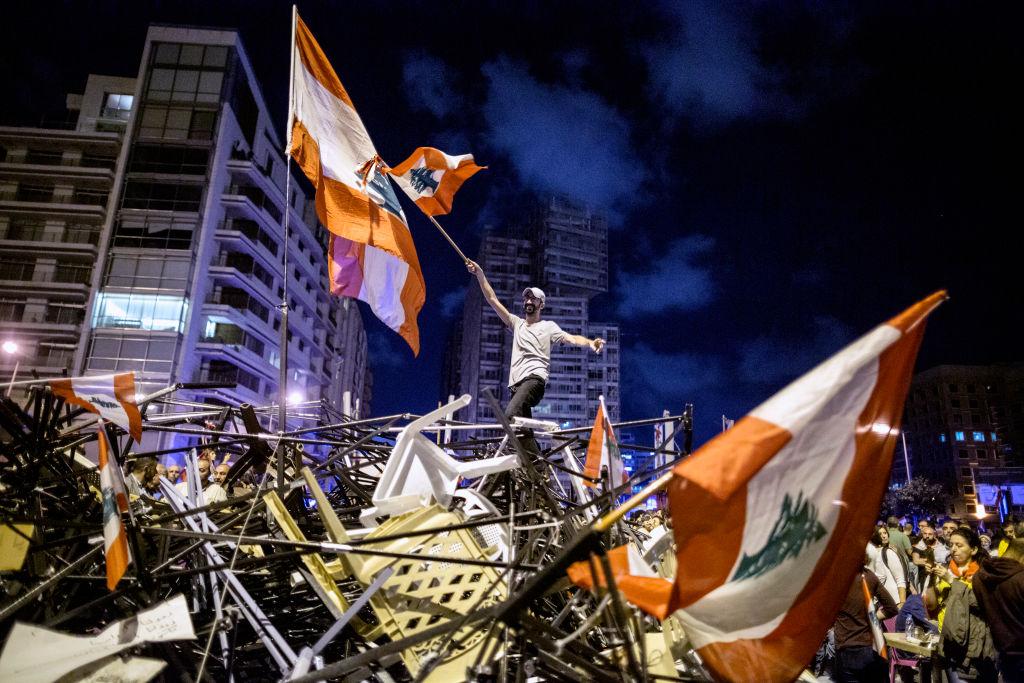Is the Middle East entering a post-sectarian phase?
Posted By Mohammed Ayoob on November 7, 2019 @ 11:31

The anti-government protests that have been raging in Iraq and Lebanon for the past several weeks have sent two strong messages.
First, the average citizen is fed up with corrupt ruling elites that engage in all sorts of manoeuvres to remain in power. Despite the existence of multiple parties in both countries, governing has become a rotating-door system with the same leaders alternating in office. Second, sectarian divisions are breaking down as members of all sects join hands in challenging established parties and the zaim (strongmen) who lead them.
Both these messages are welcome in a region known for endemic corruption, authoritarian rulers and sectarian bloodletting. The Lebanese polity has been divided along confessional and sectarian lines since the republic’s establishment in 1943. Government offices and representation in parliament are distributed on the basis of sectarian quotas.
This has given confessional-based parties and militias a strong foothold in Lebanese politics that has so far been impossible to shake. Hezbollah’s decades-long dominance of Shia politics is the primary example of this phenomenon, but Christian and Druze militias also operate on the same principle.
Iraq had been under brutal Baathist rule for decades until the American invasion of 2003 that ousted Saddam Hussein. However, the American occupation, by destroying the state structure in the country, spawned sectarian militias and parties that acted as security providers for their communities. Politics in Iraq became wholly sectarian, with all parties operating on a sectarian basis.
In both Lebanon and Iraq, the protest movements cut across sectarian lines, providing a glimmer of hope that both countries could be moving towards transcending sectarian divides and eroding the control of the traditional confession-based leaderships. The most remarkable example of this turnaround is the challenge being posed to Hezbollah, which is a political and military organisation with disciplined cadres.
Given Hezbollah’s image as the protector of the Shia, its political organisation, its military muscle, and Iran’s financial support for it, it was unimaginable until recently that a challenge to its position could arise from within the Shia community. But the challenge is not limited to Hezbollah. The Sunni Prime Minister Saad Hariri has also lost the confidence of his Sunni constituents and has been forced to resign. The Maronite President Michel Aoun is under pressure from his Christian constituency to do so as well.
There is also an international angle to these developments. If the upheavals in Lebanon and Iraq succeed in overthrowing the traditional sect-based leaderships, the biggest external loser will be Iran. Tehran has invested a great deal in building up Hezbollah in Lebanon and several Shia parties in Iraq. It has also helped create Shia militias in Iraq that have acted in support of Iranian objectives in Iraq and Syria. If Hezbollah loses credibility among its Shia constituents, Iran will lose much of its influence in Lebanon, which it considers essential both for confronting Israel and for providing support to the Assad regime in Syria.
Tehran perceives Iraq to be vital to Iran’s security. Given its bloody experience of the Iran–Iraq war of 1980–88, Iran can’t afford to have a less than pliant government in power in Baghdad. What has Tehran very worried is that significant voices, including influential Shia ones, have now been raised demanding that the Iraqi regime emerge from under Iran’s shadow and that the latter’s influence be curbed if not totally removed.
Some of the largest and most virulent demonstrations against the Iraqi government and against Iran have taken place in the Shia-dominated cities and towns in southern Iraq. Shia protestors attacked the Iranian consulate in the holy city of Karbala and tore down the Iranian flag.
Such demonstrations have prompted Iran’s Supreme Leader Ali Khamenei to blame ‘foreign elements’ for inciting the protest movement. Tehran has several instruments it can use to prevent radical change in Iraq, including the Shia militias trained by the Islamic Revolutionary Guard Corps. However, the deployment of these militias to crush the protest movement could lead to a confrontation between them and the emerging popular forces, thus further discrediting Iran in the eyes of the Iraqi population, including the Shia.
The question that continues to stymie observers is whether the protest movements in Lebanon and Iraq have the organisational discipline and the staying power to bring the current regimes to their knees. So far, the protests have been sustained by spontaneous action not by a tightly knit structure. It is anyone’s guess if such spontaneous action is sustainable in the long run. The experience of Egypt in 2011 doesn’t provide much cause for optimism on this score.
Equally important, it’s unclear whether the protest movements, given their amorphous and spontaneous nature, can provide viable and coherent alternative governing structures to Lebanon and Iraq. There is a possibility that one or both of these countries could descend into anarchy if the current power structures crumble and alternative structures aren’t able to provide governance and security.
Iraq and Lebanon seem to be on the cusp of far-reaching political change, but it’s still too early to predict the final outcome of the struggles for transformation. If the protest movements succeed, they will herald the beginning of a non-sectarian and democratic future for the Arab world. If they fail, the region will continue to be mired in the same dysfunctional mess it has been trapped in for the past several decades.
Article printed from The Strategist: https://aspistrategist.ru
URL to article: /is-the-middle-east-entering-a-post-sectarian-phase/
Click here to print.